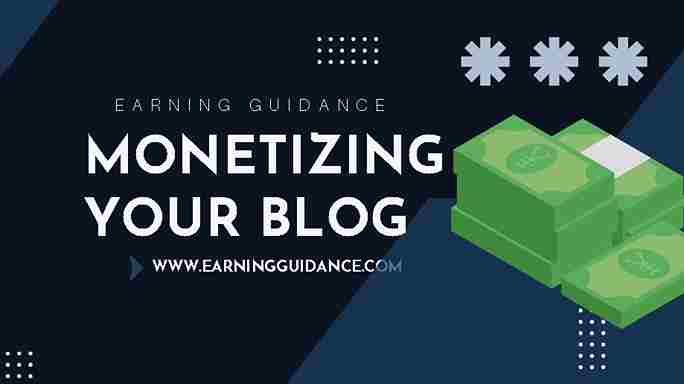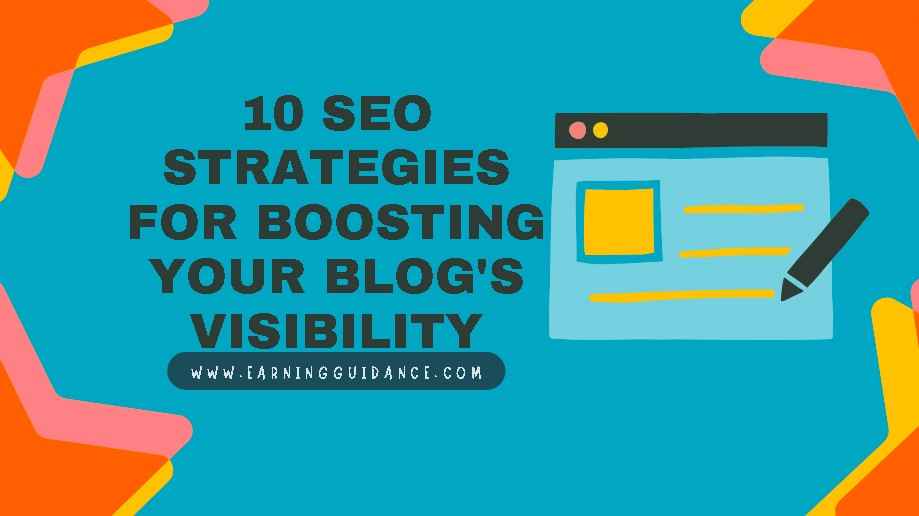Table Of Contents
- 1 Introduction
- 2 Understanding Blog Monetization
- 3 Display Advertising
- 4 Affiliate Marketing
- 5 Sponsored Content and Brand Collaborations
- 6 Selling Digital Products
- 7 Membership Sites and Subscriptions
- 8 Sponsored Reviews and Product Recommendations
- 9 Selling Physical Products
- 10 Donations and Crowdfunding
- 11 Conclusion
- 12 FAQs
- 12.1 Q: How do I encourage readers to donate to my blog?
- 12.2 Q: What should I offer as rewards or perks in a crowdfunding campaign?
- 12.3 Q: Can I run multiple crowdfunding campaigns for different projects on my blog?
- 12.4 Q: How do I promote my donation buttons or crowdfunding campaign effectively?
- 12.5 Q: Is it possible to monetize a blog solely through donations or crowdfunding?
- 12.6 Q: How long does it take to monetize a blog?
- 12.7 Q: What are the best niches for blog monetization?
- 12.8 Q: Is it possible to monetize a blog with low traffic?
- 12.9 Q: How much money can I make from blog monetization?
- 12.10 Q: What are the common mistakes to avoid in blog monetization?
- 13 Conclusion
Introduction
Monetizing a blog is crucial for bloggers who want to turn their passion into a sustainable income stream. This article aims to provide a comprehensive guide to monetization methods, helping you explore proven strategies to maximize your blog’s revenue potential.
Understanding Blog Monetization
Monetizing a blog is an essential step for bloggers who want to generate income from their online presence. By implementing effective monetization strategies, you can turn your blog into a profitable venture. This section provides an in-depth understanding of blog monetization, its benefits, and the different methods available.
Introduction to Blog Monetization
Blog monetization refers to the process of earning money from your blog through various revenue streams. It allows you to leverage your content, audience, and online influence to generate income. Here are some key points to consider:
- Monetizing your blog provides a way to turn your passion into a sustainable income source.
- It offers the opportunity to earn revenue while sharing valuable content with your audience.
- Successful blog monetization requires a combination of strategic planning, audience understanding, and implementation of effective monetization methods.
10 SEO Strategies for Boosting Your Blog’s Visibility
Benefits of Blog Monetization
Monetizing your blog offers several benefits that go beyond financial rewards. Here are some advantages of blog monetization:
- Financial Independence: Blogging can become a full-time career or provide a significant supplementary income.
- Creative Freedom: Monetization allows you to focus on creating valuable content without worrying about financial constraints.
- Personal Branding: It helps establish your authority and expertise within your niche.
- Opportunities for Growth: Monetization opens doors to collaborations, partnerships, and networking with other industry professionals.
Different Methods of Blog Monetization
There are various proven methods to monetize your blog. Here, we will explore some of the most popular and effective strategies:
- Display Advertising: Displaying ads on your blog through ad networks like Google AdSense can generate revenue based on impressions or clicks.
- Affiliate Marketing: Promoting products or services and earning a commission for each sale or referral made through your unique affiliate links.
- Sponsored Content: Collaborating with brands to create sponsored posts or content where you receive compensation for featuring their products or services.
- Selling Digital Products: Creating and selling ebooks, online courses, templates, or other digital products relevant to your niche.
- Membership Sites and Subscriptions: Offering exclusive content, services, or community access to paid members or subscribers.
- Selling Physical Products: Setting up an online store to sell merchandise, products, or merchandise related to your blog’s niche.
- Donations and Crowdfunding: Inviting your audience to support your blog financially through donations or crowdfunding platforms.
Key Considerations for Blog Monetization
Before implementing any monetization method, it’s essential to consider a few key factors:
- Audience Alignment: Ensure that your chosen monetization methods align with your target audience’s needs and preferences.
- Content Relevance: Select monetization strategies that complement your blog’s niche and content.
- User Experience: Strive to maintain a positive user experience by balancing monetization efforts with content quality and site performance.
- Transparency and Trust: Disclose any sponsored content or affiliate relationships to maintain transparency and build trust with your audience.
By understanding the fundamentals of blog monetization and exploring different methods, you can unlock the potential to generate income from your blog. Remember to experiment, adapt to your audience’s feedback, and continuously evaluate and optimize your monetization strategies for long-term success.
10 Essential Blogging Tips for Quick and Easy Ranking
Display Advertising
Display advertising is a popular method of blog monetization that involves displaying ads on your blog to generate revenue. It allows you to earn money by hosting advertisements from ad networks or direct advertisers. In this section, we will explore the concept of display advertising and provide insights on how to effectively implement it on your blog.
Introduction to Display Advertising
Display advertising involves placing visual advertisements, such as banners or images, on your blog’s webpages. These ads are typically provided by ad networks, which connect advertisers with publishers (blog owners) looking to monetize their websites. Here are some key points to consider:
- Display ads can come in various formats, including static banners, animated graphics, or video ads.
- Advertisements are typically displayed in designated ad spaces on your blog, such as sidebars, headers, or within the content.
- Ad networks handle the process of matching relevant ads to your blog’s content and audience.
Setting Up Display Ads on Your Blog
Implementing display ads on your blog involves a few steps. Here’s an overview of the process:
- Choose an Ad Network: Research and select a reputable ad network that aligns with your blog’s niche and audience. Popular ad networks include Google AdSense, Media.net, and AdThrive.
- Sign up and Get Approved: Register for an account with the chosen ad network and follow their approval process. Ad networks often have specific requirements regarding blog traffic, content quality, and site design.
- Generate Ad Code: Once approved, the ad network will provide you with ad code snippets. These snippets contain HTML or JavaScript code that you need to insert into your blog’s template or specific ad spaces.
- Place Ads on Your Blog: Identify the optimal ad placement areas on your blog, such as sidebars, headers, or within the content. Insert the ad code into the corresponding sections of your blog’s HTML or using ad management plugins if available.
- Optimize Ad Placement: Experiment with different ad placements and sizes to find the configurations that yield the best results. Consider factors such as visibility, user experience, and the overall design of your blog.
- Track Performance: Most ad networks provide analytics and reporting tools that allow you to track your ad performance. Monitor metrics such as impressions, clicks, and earnings to evaluate the effectiveness of your display ads.
How to Choose the Perfect Blogging Platform for Your Needs
Optimizing Ad Placement and Formats
To maximize the revenue generated from display advertising, it’s important to optimize your ad placement and formats. Consider the following tips:
- Strategic Placement: Position ads where they are easily visible to your audience, such as above the fold or alongside engaging content.
- Responsive Design: Ensure that your blog’s design is responsive, meaning the ads adjust to fit different screen sizes and devices.
- Balance with Content: Maintain a balance between ads and your content to provide a positive user experience. Avoid overwhelming your readers with excessive or intrusive ads.
- A/B Testing: Experiment with different ad formats, sizes, and placements to identify the configurations that result in higher click-through rates and earnings.
- Ad Blocking Considerations: Keep in mind that some users may have ad blockers enabled, which can affect the visibility and revenue of your display ads.
By effectively implementing display advertising on your blog and optimizing the placement and formats, you can generate revenue from ad impressions and clicks. However, it’s important to find the right balance between monetization and user experience to ensure the long-term success of your blog.
For more detailed information, refer to the 10 Proven Ways to Monetize Your Blog guide.
Affiliate Marketing
Affiliate marketing is a popular and effective method of monetizing your blog. It involves promoting products or services on your blog and earning a commission for each sale or action generated through your referral. In this section, we will explore the concept of affiliate marketing and provide insights on how to effectively implement it on your blog.
Introduction to Affiliate Marketing
Affiliate marketing works on a commission-based model, where you promote products or services offered by other companies, known as merchants or advertisers. When a user clicks on your affiliate link and makes a purchase or performs a desired action, such as signing up for a service, you earn a commission. Here are some key points to consider:
- Affiliate marketing allows you to earn a commission without having to create or sell your own products.
- It is a performance-based marketing strategy, as your earnings depend on the successful conversions generated through your affiliate links.
- Affiliate programs are typically managed by affiliate networks or individual companies that provide tracking and payment systems.
Finding and Joining Affiliate Programs
To start with affiliate marketing, you need to find and join suitable affiliate programs. Here’s an overview of the process:
- Identify Your Niche: Determine your blog’s niche and audience. Focus on affiliate programs that align with your content and are relevant to your readers.
- Research Affiliate Networks: Explore reputable affiliate networks like Amazon Associates, ShareASale, CJ Affiliate, or individual affiliate programs offered by companies in your niche.
- Apply for Affiliate Programs: Sign up for the affiliate programs that fit your niche. Some programs may have specific requirements, such as minimum traffic or content quality.
- Get Your Affiliate Links: Once approved, you will receive unique affiliate links or banners to promote the products or services.
- Create Compelling Content: Incorporate affiliate links naturally within your blog posts, product reviews, resource pages, or relevant content. Provide value to your readers by offering genuine recommendations and insights.
- Track Conversions and Earnings: Most affiliate programs provide tracking tools or dashboards to monitor clicks, conversions, and earnings. Use these insights to optimize your affiliate marketing efforts.
Strategies for Promoting Affiliate Products
To effectively promote affiliate products and increase your earnings, consider the following strategies:
- Product Reviews: Write detailed and unbiased reviews of products or services you have used or thoroughly researched. Highlight the benefits and drawbacks, and include your affiliate links for readers to make a purchase.
- Resource Pages: Create resource pages on your blog where you list recommended products or services related to your niche. Provide valuable information and insights to encourage readers to click on your affiliate links.
- Tutorials and Guides: Develop tutorials or guides that showcase how to use or benefit from specific products or services. Include affiliate links within the content to drive conversions.
- Email Marketing: Utilize your email list to promote affiliate offers, provide exclusive discounts or bonuses, and build relationships with your subscribers.
- Social Media Promotion: Leverage your social media platforms to share affiliate product recommendations, using captivating visuals and compelling captions. Engage with your audience and respond to their questions or comments.
Remember to disclose your affiliate relationships to maintain transparency and build trust with your audience. Affiliate marketing can be a lucrative monetization method, but it requires consistent effort, valuable content, and building strong relationships with your audience.
To learn more about affiliate marketing, check out The Ultimate Guide to Monetizing Your Blog.
Sponsored Content and Brand Collaborations
Sponsored content and brand collaborations offer a valuable opportunity to monetize your blog while building relationships with brands in your niche. In this section, we will explore the concept of sponsored content, discuss the benefits of brand collaborations, and provide insights on how to effectively approach and negotiate such partnerships.
Exploring Sponsored Posts and Brand Partnerships
Sponsored posts involve collaborating with brands to create content that promotes their products or services. These partnerships can take various forms, including sponsored blog posts, social media mentions, product reviews, or even sponsored videos. Here are some key points to consider:
- Authenticity and Relevance: Ensure that any sponsored content aligns with your blog’s niche and is relevant to your audience. It’s crucial to maintain the trust and interest of your readers.
- Benefits of Brand Collaborations:
- Monetization: Sponsored content provides an additional source of income for your blog.
- Brand Exposure: Partnering with reputable brands can expand your blog’s reach and exposure to new audiences.
- Relationship Building: Collaborating with brands can lead to long-term relationships, opening doors for future opportunities and partnerships.
- Transparency and Disclosure: It’s essential to disclose sponsored content to your readers to maintain transparency and comply with relevant guidelines or regulations.
Mastering the Art of Writing Engaging Blog Posts
Approaching Brands and Negotiating Collaborations
When seeking brand collaborations, consider the following steps:
- Identify Relevant Brands: Research and identify brands that align with your blog’s niche and target audience. Look for brands that resonate with your values and have products or services your audience may find valuable.
- Reach Out with a Proposal: Craft a compelling pitch or proposal highlighting the benefits of collaborating with your blog. Include relevant statistics, such as your blog’s reach, engagement metrics, and examples of your previous sponsored content.
- Showcase Your Value: Emphasize the unique value you can offer to brands, such as your expertise, engaged audience, or creative approach to content creation. Showcase any awards, recognition, or testimonials that demonstrate your credibility and influence.
- Negotiate Terms and Compensation: Discuss the scope of the collaboration, the deliverables expected from both parties, and the compensation structure. Consider factors such as the type of content, exclusivity, usage rights, and payment terms.
- Maintain Transparency and Integrity: When creating sponsored content, maintain authenticity by providing genuine opinions and experiences. Clearly disclose any sponsorship or partnership in a prominent and transparent manner.
- Deliver Quality Content: Create high-quality, engaging content that showcases the brand’s products or services while providing value to your audience. Strive to exceed expectations and meet agreed-upon deadlines.
Remember, building strong relationships with brands and delivering exceptional sponsored content can lead to recurring collaborations and further monetization opportunities for your blog.
You can find valuable insights on sponsored content in the article Blogging for Money: How to Monetize Your Blog.
Selling Digital Products
Selling digital products is a popular monetization method for bloggers, allowing them to leverage their expertise and create valuable resources for their audience. In this section, we will explore the benefits of selling digital products, discuss different types of digital products you can create, and provide insights on marketing and delivering them effectively.
Introduction to Selling Digital Products on Your Blog
Selling digital products offers several advantages for blog monetization. Here are some key benefits:
- High Profit Margins: Digital products have minimal production and distribution costs, allowing you to earn higher profit margins compared to physical products.
- Scalability: Once created, digital products can be sold repeatedly without additional effort, making them highly scalable.
- Value and Expertise: Digital products allow you to package and share your knowledge, expertise, and unique insights with your audience.
Creating and Marketing Ebooks, Courses, or Templates
There are various types of digital products you can create and sell on your blog. Here are three popular options:
- Ebooks: Ebooks are informative and comprehensive guides on specific topics. They can be in PDF format or compatible with e-readers like Kindle. Consider the following steps when creating and marketing ebooks:
- Choose a topic that resonates with your audience and addresses their pain points.
- Outline the content, conduct research, and provide valuable insights and actionable tips.
- Design an attractive cover and format the content professionally.
- Promote your ebook through blog posts, social media, email marketing, and collaborations with other bloggers or influencers.
- Set up an online store or use third-party platforms like Amazon Kindle Direct Publishing to sell your ebook.
- Online Courses: Online courses allow you to provide in-depth education on a specific subject. Consider the following steps when creating and marketing online courses:
- Define the course topic and outline the modules or lessons.
- Develop course materials such as video lectures, slide presentations, and written resources.
- Create a user-friendly platform or use existing online course platforms like Udemy, Teachable, or Thinkific.
- Promote your course through your blog, email marketing, social media, and partnerships with other influencers or platforms.
- Provide ongoing support and engagement with your course participants.
- Templates or Digital Assets: Templates and digital assets can be helpful resources for your audience. They can include website themes, graphic design templates, printable planners, or social media graphics. Consider the following steps when creating and marketing templates or digital assets:
- Identify the specific needs or pain points of your audience.
- Design visually appealing and functional templates or assets.
- Set up an online store or use platforms like Etsy or Creative Market to sell your products.
- Showcase the benefits and features of your templates through blog posts, social media, and demonstrations.
- Provide customer support and updates to maintain customer satisfaction.
Setting up Payment Gateways and Delivering Digital Products
To sell digital products effectively, you need to consider the following:
- Payment Gateways: Choose a reliable payment gateway that integrates with your blog and offers secure transactions. Popular options include PayPal, Stripe, or specialized platforms like Gumroad or SendOwl.
- Product Delivery: Determine how you will deliver your digital products to customers after purchase. This can be done through automated email delivery, direct download links, or access to a membership area.
- Customer Support: Provide clear instructions on product usage and troubleshoot common issues. Respond to customer inquiries promptly and offer assistance when needed.
- Customer Feedback and Reviews: Encourage customers to leave reviews and testimonials for your products. Positive feedback can boost sales and build trust with potential customers.
Remember, when selling digital products, focus on providing value and addressing your audience’s needs. Continuously refine and improve your products based on customer feedback to ensure long-term success.
Membership Sites and Subscriptions
Membership sites and subscriptions are powerful monetization strategies that allow you to offer exclusive content and benefits to your audience in exchange for recurring payments. In this section, we will explore the concept of membership sites, discuss the benefits of implementing a subscription model, and provide insights on creating and managing a successful membership program.
Overview of Membership Sites and Subscription Models
Membership sites involve providing restricted access to premium content, resources, or services to members who have paid for a subscription. Here are some key benefits of implementing a membership site:
- Recurring Revenue: Membership sites generate recurring revenue streams, providing stability and predictability for your blog’s income.
- Exclusive Content: Members gain access to specialized content that is not available to non-members, fostering a sense of exclusivity and value.
- Community Building: Membership sites can foster a community of like-minded individuals who share common interests, encouraging engagement and interaction among members.
Creating Exclusive Content and Benefits for Subscribers
To create a compelling membership site, consider the following steps:
- Define Membership Levels: Determine the different membership tiers or levels you want to offer. Each level can provide varying degrees of access, benefits, and privileges.
- Exclusive Content: Develop high-quality, exclusive content that provides unique value to your members. This can include in-depth articles, tutorials, videos, case studies, or access to premium resources.
- Engagement Opportunities: Offer interactive elements such as discussion forums, private groups, or live Q&A sessions to facilitate member engagement and foster a sense of community.
- Member Discounts and Bonuses: Provide special discounts or bonuses on your other products, services, or affiliate offerings as a perk for being a member.
- Early Access and Sneak Peeks: Grant members early access to new content, product launches, or upcoming events to make them feel valued and privileged.
- Continual Updates and Fresh Content: Regularly update your membership site with fresh content and resources to keep members engaged and encourage subscription renewals.
Managing and Growing a Successful Membership Program
To effectively manage and grow your membership program, consider the following tips:
- Membership Platform: Choose a reliable membership platform that integrates with your blog and offers features such as content restriction, user management, payment processing, and analytics. Examples include MemberPress, Teachable, or WordPress membership plugins.
- Promotion and Marketing: Develop a marketing strategy to attract new members to your membership site. Utilize various channels such as your blog, email marketing, social media, webinars, guest posting, or collaborations with influencers in your niche.
- Retention Strategies: Implement strategies to retain existing members and encourage subscription renewals. This can include providing ongoing value, member-exclusive offers, personalized communication, and addressing member feedback and concerns.
- Analytics and Metrics: Use analytics tools to track key metrics such as membership growth, retention rates, engagement levels, and revenue. This data will help you make informed decisions and optimize your membership program.
- Continuous Improvement: Regularly solicit feedback from your members and make improvements based on their suggestions. Continually evaluate and enhance your membership offering to ensure it remains valuable and relevant.
Remember, building a successful membership program takes time and effort. Focus on delivering exceptional value, fostering a sense of community, and consistently engaging with your members to create a thriving membership site.
Sponsored Reviews and Product Recommendations
Sponsored reviews and product recommendations are effective strategies for monetizing your blog by collaborating with brands and sharing your honest opinions about their products or services. In this section, we will explore the concept of sponsored reviews, discuss best practices for maintaining transparency and integrity, and provide tips for leveraging your expertise to provide valuable recommendations.
Exploring Sponsored Reviews
Sponsored reviews involve partnering with brands or companies to write an in-depth review of their products or services in exchange for compensation. Here’s how you can effectively incorporate sponsored reviews into your blog monetization strategy:
- Disclosure and Transparency: Always disclose to your readers that a review is sponsored. Transparency builds trust and ensures that your audience understands the nature of the content.
- Choose Relevant Products: Select products or services that are relevant to your blog’s niche and align with your audience’s interests. It’s essential to maintain the authenticity of your content and only promote products you genuinely believe in.
- Thorough Evaluation: Use the product or service extensively and provide an honest evaluation. Highlight both the strengths and weaknesses to offer a balanced perspective to your readers.
- Provide Value: Focus on delivering value to your readers by providing detailed insights, personal experiences, and practical tips on how the product or service can benefit them.
- Visuals and Media: Incorporate high-quality visuals such as images, videos, or infographics to enhance the visual appeal of your sponsored review and provide a more engaging experience.
- SEO Optimization: Optimize your sponsored review for search engines by including relevant keywords, meta tags, and internal links to related content on your blog.
Maintaining Transparency and Integrity
To maintain transparency and integrity in sponsored reviews and product recommendations, consider the following practices:
- Honesty: Be honest and unbiased in your opinions. Focus on providing accurate information and sharing your genuine experiences with the product or service.
- Disclose Relationships: Clearly disclose any existing relationships or partnerships with the brand or company being reviewed. This disclosure ensures transparency and builds trust with your audience.
- Objective Evaluation: Base your review on objective criteria, such as product features, performance, usability, value for money, and customer support. This helps your readers make informed decisions.
- Ethical Standards: Adhere to ethical guidelines set by relevant authorities or organizations in your industry. Avoid making false claims or exaggerating the benefits of the product or service.
Leveraging Your Expertise for Recommendations
In addition to sponsored reviews, you can leverage your expertise to provide valuable product recommendations to your audience. Here are some tips for effective product recommendations:
- Niche Relevance: Recommend products that align with your blog’s niche and are genuinely useful to your audience. Choose products you have personally used or thoroughly researched.
- Highlight Benefits: Clearly communicate the benefits and advantages of the recommended products. Explain how they can solve specific problems or improve the lives of your readers.
- Comparisons and Alternatives: Provide comparisons between similar products or offer alternatives to cater to different preferences and budgets. This helps readers make informed choices based on their specific needs.
- Track Affiliate Links: If you include affiliate links in your recommendations, ensure they are properly tracked and comply with the affiliate program’s terms and conditions. Regularly monitor and optimize your affiliate links for maximum conversion.
By maintaining transparency, providing honest evaluations, and leveraging your expertise, you can effectively incorporate sponsored reviews and product recommendations into your blog monetization strategy while maintaining the trust and loyalty of your audience.
Selling Physical Products
Selling physical products on your blog is an excellent way to monetize your platform and diversify your revenue streams. Whether you have a niche-specific blog or a general interest blog, there are several steps you can take to successfully sell physical products. In this section, we will explore the process of selling physical products on your blog, including setting up an online store, integrating with e-commerce platforms, and managing inventory and customer support.
Introduction to Selling Physical Products
Selling physical products involves offering tangible items to your audience for purchase. This could include merchandise related to your blog’s niche, curated products, handmade crafts, or even products you personally create. Here’s how you can get started:
- Define Your Product Line: Identify the types of physical products that align with your blog’s niche and appeal to your target audience. Consider what products would be valuable and relevant to your readers.
- Source or Create Products: Determine how you will source or create the products you plan to sell. This could involve partnering with suppliers, creating your own products, or using print-on-demand services.
- Set Up an Online Store: Create an e-commerce section on your blog where visitors can browse and purchase your products. Choose an e-commerce platform that suits your needs, such as Shopify, WooCommerce, or BigCommerce.
- Product Descriptions and Visuals: Write compelling product descriptions that highlight the features, benefits, and unique selling points of each item. Include high-quality product images or videos to showcase the products effectively.
- Payment and Checkout Process: Integrate a secure payment gateway into your online store to facilitate smooth and secure transactions. Offer multiple payment options, such as credit cards, PayPal, or digital wallets, to accommodate various preferences.
- Shipping and Fulfillment: Determine how you will handle shipping and fulfillment. Decide on shipping carriers, packaging materials, and delivery options. Consider offering international shipping if applicable.
- Inventory Management: Implement a system to track and manage your inventory effectively. This ensures that you can fulfill orders promptly and avoid overselling or running out of stock.
- Customer Support: Provide excellent customer support by promptly addressing inquiries, resolving issues, and maintaining clear communication with buyers. Consider implementing live chat, email support, or a dedicated support ticket system.
Setting Up an Online Store or Integrating with E-commerce Platforms
To sell physical products on your blog, you have two primary options: setting up an online store or integrating with e-commerce platforms. Here’s an overview of each approach:
- Setting Up an Online Store: This option involves creating a dedicated section on your blog where visitors can browse and purchase your products directly. You have more control over the branding, design, and user experience of your store.
- Integrating with E-commerce Platforms: Alternatively, you can integrate your blog with established e-commerce platforms like Shopify, WooCommerce, or BigCommerce. These platforms provide ready-made solutions for managing product listings, shopping carts, and payment processing.
Both options have their advantages, so choose the one that aligns with your technical expertise, budget, and customization requirements.
Managing Inventory, Shipping, and Customer Support
Successfully selling physical products on your blog requires efficient management of inventory, shipping, and customer support. Consider the following practices:
- Inventory Tracking: Use inventory management software or spreadsheets to keep track of your stock levels, monitor sales, and ensure timely restocking.
- Shipping Options: Research and select the most suitable shipping carriers and methods for your products. Consider factors like cost, reliability, and delivery speed. Offer tracking information to customers to enhance their shopping experience.
- Packaging and Branding: Invest in attractive and professional packaging that aligns with your brand image. Use custom labels or inserts to reinforce your brand identity and provide a memorable unboxing experience.
- Returns and Refunds: Establish clear policies for returns and refunds to address customer concerns. Ensure your policies comply with relevant consumer protection regulations.
- Customer Feedback: Encourage customers to leave reviews and feedback on your products. Positive reviews can help boost sales and build trust with potential buyers.
By following these steps and implementing effective inventory management, shipping practices, and customer support, you can successfully sell physical products on your blog and create an additional revenue stream. Remember to continually evaluate and optimize your product offerings based on customer feedback and market trends to maximize your success.
Donations and Crowdfunding
Donations and crowdfunding can be powerful ways to monetize your blog and receive financial support from your audience. Whether you offer valuable content, provide a service, or support a cause, donations and crowdfunding enable your readers to contribute directly to your blog’s growth and sustainability. In this section, we will explore the concept of donations and crowdfunding, how to integrate them into your blog, and strategies for building a community of supporters.
Exploring Donation and Crowdfunding Options
Donations and crowdfunding allow your audience to make voluntary financial contributions to support your blog. Here are two common options:
- Donation Buttons: Donation buttons provide a simple and direct way for readers to contribute funds to your blog. Platforms like PayPal, Ko-fi, or Patreon offer customizable donation buttons that you can embed on your blog. Readers can choose the amount they wish to donate, and the funds are typically transferred directly to your designated account.
- Crowdfunding Campaigns: Crowdfunding involves setting up a campaign to raise funds for a specific project or goal. Platforms like Kickstarter, Indiegogo, or GoFundMe allow you to create a campaign page where you can outline your project, set a funding goal, and offer rewards or incentives for different contribution levels. Supporters can contribute varying amounts to help you reach your target.
Integrating Donation Buttons or Crowdfunding Campaigns on Your Blog
To integrate donations or crowdfunding into your blog effectively, consider the following steps:
- Choose the Right Platform: Select a platform that aligns with your goals, target audience, and preferred features. Research different platforms to find one that offers user-friendly donation buttons or crowdfunding campaign tools.
- Create Compelling Content: Craft persuasive and heartfelt content that explains why donations or crowdfunding are essential for your blog’s growth or project’s success. Clearly articulate the impact that contributions can make and how they will benefit your readers.
- Embed Donation Buttons: If you opt for donation buttons, customize them to match your blog’s design and place them strategically on your site. Consider adding a brief description or call-to-action to encourage readers to support your work.
- Launch a Crowdfunding Campaign: If you choose to run a crowdfunding campaign, carefully plan and execute your campaign strategy. Prepare engaging visuals, compelling project descriptions, and enticing rewards or perks for different contribution levels.
- Promote Your Donation or Crowdfunding Efforts: Spread the word about your donation buttons or crowdfunding campaign through various channels. Utilize your blog’s content, social media platforms, email newsletters, and collaborations with other bloggers or influencers to reach a wider audience.
- Express Gratitude and Acknowledge Supporters: Regularly express your appreciation to those who contribute to your blog. Consider publicly acknowledging supporters through shout-outs on your blog, social media mentions, or exclusive rewards for contributors.
Building a Community of Supporters and Leveraging Contributions
Building a community of supporters is crucial for long-term success in donations and crowdfunding. Here are some strategies to foster engagement and maximize contributions:
- Communicate Transparently: Be transparent about how the funds will be used and the progress of your projects. Regularly update your audience on the impact their contributions have made.
- Offer Exclusive Content or Benefits: Provide exclusive content or perks to donors or crowdfunding backers as a way to show appreciation for their support. This could include bonus content, early access to new material, or personalized thank-you messages.
- Engage with Your Community: Actively interact with your supporters through comments, emails, or social media. Respond to their questions, listen to their feedback, and make them feel valued and involved in your blog’s journey.
- Collaborate with Supporters: Collaborate with your audience by seeking their input, inviting guest contributions, or involving them in decision-making processes. This sense of community and ownership can strengthen their connection to your blog and increase their willingness to contribute.
Remember that building a sustainable donation or crowdfunding model takes time and effort. Continually nurture your relationship with your audience, explore creative ways to engage them, and always provide value in return for their support.
Conclusion
Monetizing your blog through donations and crowdfunding can provide a direct and meaningful way for your audience to support your work. By integrating donation buttons or running crowdfunding campaigns, engaging with your community, and providing value in return, you can create a mutually beneficial relationship with your supporters. Remember to maintain transparency, express gratitude, and continually nurture your community as you explore the possibilities of blog monetization through donations and crowdfunding.
FAQs
Q: How do I encourage readers to donate to my blog?
A: Encourage readers to donate by showcasing the value you provide, sharing personal stories about the impact of their contributions, and making the donation process simple and convenient.
Q: What should I offer as rewards or perks in a crowdfunding campaign?
A: Offer rewards that align with your blog’s niche and provide value to your supporters. This could include exclusive content, merchandise, personalized experiences, or early access to upcoming projects.
Q: Can I run multiple crowdfunding campaigns for different projects on my blog?
A: Yes, you can run multiple crowdfunding campaigns on your blog, as long as each campaign has a clear purpose and target. Be transparent about how the funds will be allocated and the progress of each project.
A: Utilize various marketing channels, such as social media, email newsletters, collaborations with other bloggers or influencers, and direct promotion within your blog posts. Communicate the impact of contributions and show appreciation for supporters.
Q: Is it possible to monetize a blog solely through donations or crowdfunding?
A: While it is possible to monetize a blog through donations or crowdfunding, it often works best when combined with other monetization methods. Diversify your revenue streams to create a more sustainable income model.
Q: How long does it take to monetize a blog?
The time required to monetize a blog varies, but it often depends on factors such as your blog’s niche, content quality, and audience engagement. Some bloggers achieve monetization within a few months, while others may take longer.
Q: What are the best niches for blog monetization?
While various niches have monetization potential, popular niches like finance, health, lifestyle, and technology tend to offer more opportunities for blog monetization.
Q: Is it possible to monetize a blog with low traffic?
Yes, it is possible to monetize a blog with low traffic. Focus on engaging your existing audience, providing high-quality content, and exploring monetization methods suitable for your niche and audience size.
Q: How much money can I make from blog monetization?
The income potential from blog monetization varies greatly, depending on factors such as niche, traffic, monetization methods, and audience engagement. Some bloggers earn a modest side income, while others generate substantial revenue.
Q: What are the common mistakes to avoid in blog monetization?
Avoid these common mistakes in blog monetization:
- Overloading your blog with ads, affecting user experience
- Failing to disclose sponsored content or affiliate partnerships
- Ignoring audience feedback and preferences
- Neglecting to diversify monetization methods
Conclusion
In conclusion, monetizing your blog is an essential step towards turning your passion into a sustainable income source. By implementing proven methods such as display advertising, affiliate marketing, sponsored content, selling digital products, membership sites, and more, you can unlock your blog’s full earning potential. Remember to experiment, adapt to your audience’s needs, and diversify your monetization strategies for long-term success.













One thought on “Monetizing Your Blog: Proven Methods for Generating Income”